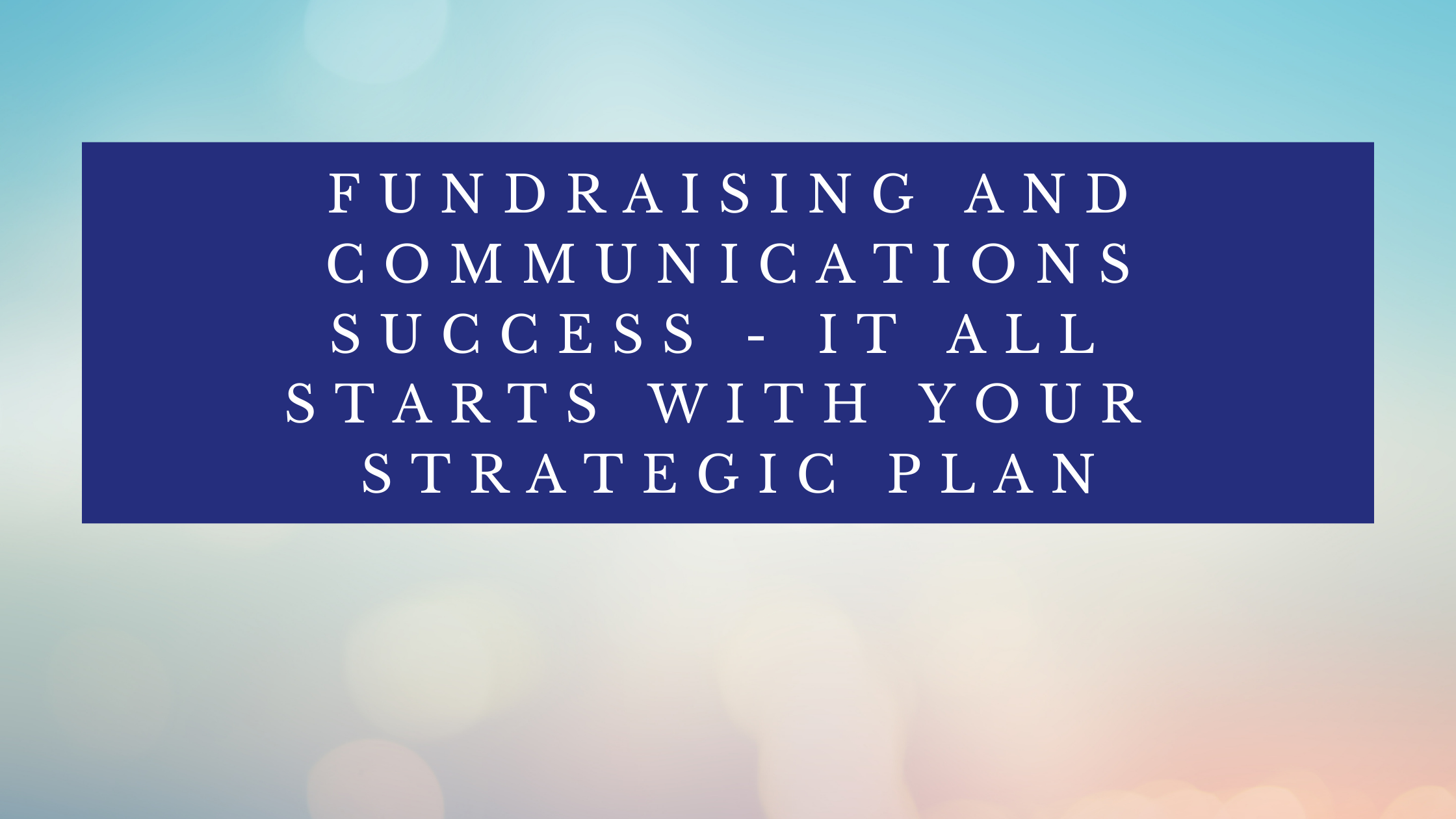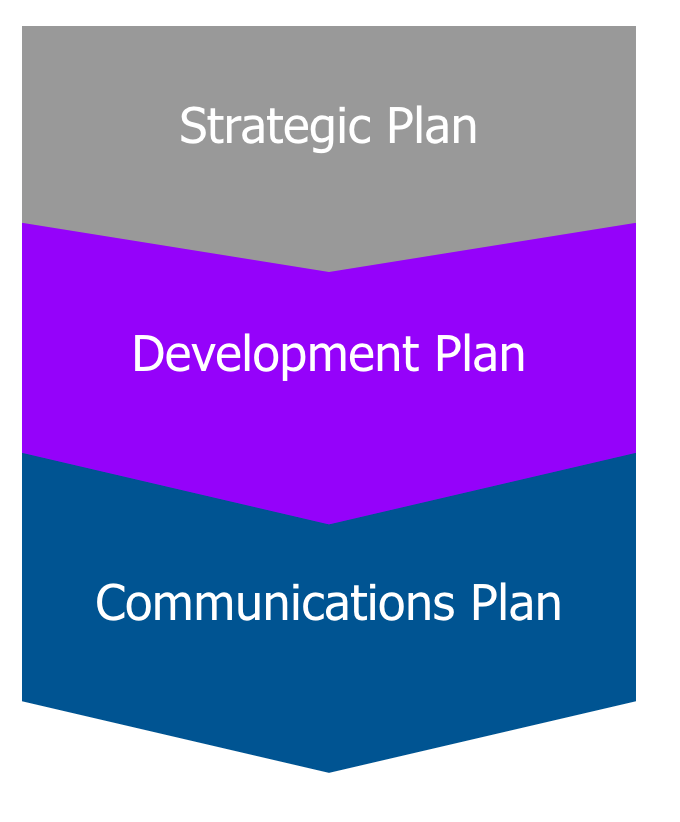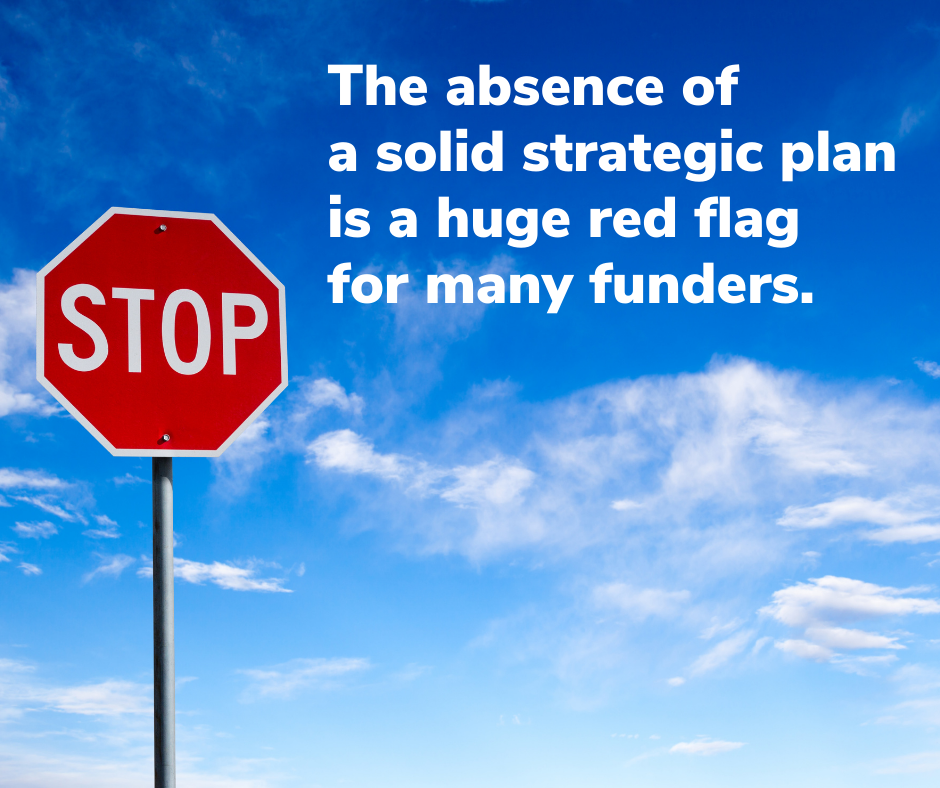
Languages
Fundraising and Communications Success - it all starts with your strategic plan

Guest blog by: Kim Fuller, Founder and CEO of Phil
Moving forward with fundraising or communications initiatives without understanding how they fit into the grand scheme of things is borderline irresponsible. It’s like showing up at the airport without knowing where you are going, without packing any luggage or a passport, and simply saying that you want to travel.
A surprising number of nonprofit organizations who turn to us for fundraising support and help with donor outreach have been operating either without a written strategic plan in place or with a strategic plan that is defunct.
Do any of the following pitfalls sound familiar?
- Your strategic plan was never detailed enough to serve as the primary framework for your organization’s decision-making processes - it’s a glorified to-do list;
- You worked on a strategic plan pre-pandemic which no longer fits;
- You have a corporate-style strategic plan that doesn’t fully speak to the needs of your stakeholders, resulting in poor fundraising outcomes.
These common stumbling blocks are not only a recipe for disaster when it comes to the day-to-day running of your nonprofit, they are also a huge red flag for many funders.
The Planning Triad
Before you can get to work on an optimal fundraising plan, you have to be able to balance both thinking strategically and communicating clearly. In other words, neither your fundraising plan nor your communications plan will be up to par if your strategic plan is weak. We can think of this as a planning triad, where the strategic plan, the communications plan, and the fundraising plan work in symbiosis.

Before committing, funders want to see a clear path to the organization’s success
According to an article in Forbes Magazine, “[among organizations] without a written strategic plan, more than half do not feel that “there are systems in place to ensure all stakeholders clearly share the vision and ‘brand’ of their nonprofit.” The author, strategic advisor Ian Altman, goes on to say that without this clear and common vision of where the organization is going, donors often start to feel that their contributions are not being or wouldn’t be put to good use. The subsequent risk is that donors are likely to seek out other organizations to support - organizations that have:
- A solid, written set of goals, actionable objectives, and defined success metrics;
- Coherent messaging across the board, including in fundraising, that matches the goals set out in the plan. This coherence reassures donors and inspires confidence.
The best way of demonstrating both of these to potential funders is to:
- Create an up-to-date strategic plan that leadership can actually use as reliable guideposts with elaborate details about how each element can be implemented.
- Create a comprehensive communications strategy that outlines precise details for optimal execution e.g. social network planning, key messaging, and expected outcomes.
Read more about evaluating your communications strategy
Creating a strategic plan that aligns with your organization’s unique ecosystem
Every strategic plan worth its salt needs to be anchored within your organization's unique ecosystem - it mustn’t be generic.
When handled in-house, many organizations begin the process of strategic planning by using a traditional template. This type of generic template is often geared toward for-profit companies. This is problematic because there is a stark difference between strategic planning in the corporate space versus the nonprofit space; nonprofit organizations need to go beyond setting financial goals.
As a nonprofit, you speak to a broader range of stakeholders, including community members and funders of different types. For this reason, a more holistic approach is needed. You need to specifically address how your organization is fulfilling its mission while having a straightforward and transparent approach to measuring success.
Having your goals and your activities well aligned and well planned-for ensures that resources are being put to use in the best way possible. With a clear roadmap, you can act proactively rather than reactively, anchoring your actions to your organization’s specific approach to achieving its mission. This is a sure-fire way to attract sustainable supporters to your organization.
Planning in a volatile pandemic-affected environment
Since the pandemic began, the planning landscape has shifted dramatically. Organizations have gone from needing to review and redo their strategic plans every 5 years or so to needing to review and redo their strategic plans every 1 to 3 years. With so much social and economic change, this was inevitable. When it costs anywhere between $5,000-35,000 to develop a new strategic plan, you want to make sure that this is money well-spent. In other words, you want to make sure that the plan you’ve invested in is actually actionable - a useful recipe for an organization's success - and not just an exercise that is completed because a funding partner or set of bylaws demands it.
 Communicating your “why”
Communicating your “why”
It’s a great idea to explore the reasons why you are choosing to redo your plan. When setting new goals for your organization there some basic questions that are important to consider:
- Where are you in your organization’s evolution? Start-up mode? Growth? Decline?
- Why have you chosen these specific goals instead of focusing on something else?
- What are the reasons for switching things up now as opposed to in the future?
- What are your long-term hopes for the organization and how do your short and medium-term goals align in the broader context of the future of the organization?
Going deeper than a simple SWOT analysis
Once you have addressed your initial “why”s, it’s time to go deeper into how your organization stands out, how it can develop, and where its vulnerabilities lie - in other words, a SWOT analysis. Whether you choose to take the next steps to shape your strategic plan internally or whether you choose to bring in a consultant or firm to help you, it’s important once again to take note of some best practices for non-profit organizations to ensure that you are providing precisely what your funders need to see. Choosing a corporate-style format is unlikely to cut it.
As non-profit communication experts, we have facilitated successful strategic planning for a wide range of charitable organizations. Since every organization wants to attract different types of funders, and every mission is unique, there is no one-size-fits-all recipe. That’s why we always opt for a more holistic approach to strategic planning for our clients. We do this by performing a SoWhat analysis that distills the different elements highlighted in the traditional SWOT analysis, framing them within the organization's unique positioning marking a clear and more measurable pathway to success.
Going beyond the SWOT analysis means taking the time to explain the reason why you are investigating particular aspects of your development at every step:
- Why do you think that your organization has certain strengths? How is this relevant to your overall mission?
- Why are the opportunities you’ve outlined worth broaching?
- Why are you seeing certain weaknesses in your organization? What can/should you do about them?
- Why are the threats that you are seeing concerning for the organization? How can you overcome the barrier?
Why do organizations seek outside help with their strategic plan?
- Strategic allocation of human resources
Time and time again, we have observed that there is a logical order to the rollout of each aspect of organizational development; one facilitates the rollout of the next in a systematically smooth way. The task of preparing and rolling out each phase can be time-consuming and exhausting, especially when internal staff members also have to focus on internal operations. This may lead to staff members burning out and a subsequent high turnover rate.
- Assistance from an experienced, impartial third party
Internal conflict can arise when large changes are suggested by in-house staff members or board members - feelings can get hurt. It is always important to get the board involved with planning but a consultant or a firm can help by being an intermediary between the board and the internal team, mediating and offering a fresh perspective while taking the pressure off both. You can't read the label if you're inside the jar!
How a holistic strategic plan can lead to highly effective fundraising
Looking at the relationship between the strategic plan and planning for organizational development, communications, branding, and web, it’s a good idea to work out which order makes the most sense for your organization. One you have finalized one element, the next will follow quite organically. Like a series of Russian dolls, there is a logic and order that ensures a solid core.
The most important thing is to ensure that the different elements of your strategy/comms/fundraising triad are working in sync to reflect the values and goals of your organization. By doing this, everyone involved in the organization will be clear about what steps to take and why they are being taken. Having each element in place will ensure that your communications and fundraising activities will drive results that you are proud of.
Summary
With a holistic, organization-specific strategic plan:
- Your executive director has a playbook for success
- Your funders see your organization as credible and accountable
- You create benchmarks for your success and can adjust to reach goals
- You can make active choices guided by your plan instead of reactive decisions
- Your staff are excited to work towards a common goal and are motivated to do their part
Think about your pain points as an organization and ask yourself if having a plan would help lessen these problems.
To revisit our airport metaphor: if you’re planning a trip, you need to be properly prepared, you pack everything you need for the journey in order, ensure you have all your documents in place, and have a clear destination in mind before showing up at check-in. Launching a fundraising campaign is similar; get your holistic planning in place, have a clear destination in mind, communicate with purpose, and you are sure to stand out to those funders.
Add Comment